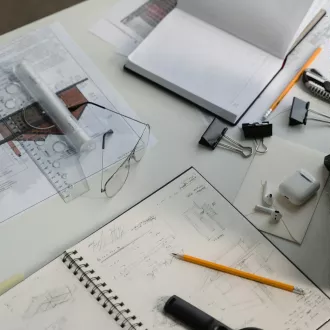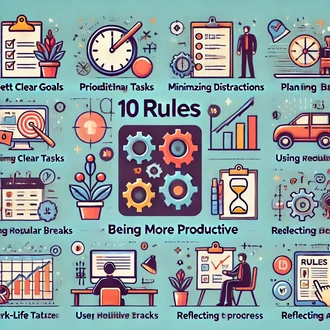Transcription Introspective analysis techniques
Introspective analysis is a powerful tool that allows us to examine our own behavior, thoughts and emotions to improve our work productivity. Through self-reflection and self-awareness, we can identify negative patterns, mental blocks and areas for improvement that prevent us from reaching our full potential.
In this session, we will explore different introspective analysis techniques that will help you discover and overcome your internal barriers and optimize your productivity at work.
Self-assessment and self-knowledge
The first step to improving your productivity through introspective analysis is to perform an honest self-assessment and develop greater self-awareness. Ask yourself: What are my strengths and weaknesses? What are my behavior patterns? What motivates me and what distracts me? By understanding your personal characteristics and how they influence your job performance, you will be able to identify areas that need attention and development.
Keeping a journal
Journaling is an effective technique for introspective analysis. Take a few minutes at the end of each day to reflect on your experiences and emotions during the workday. Record your accomplishments, challenges, and situations that made you feel more or less productive. Identify recurring patterns and analyze how your actions and emotions influenced your performance. This practice will help you better understand your habits and take steps to improve them.
Analyzing your past accomplishments and challenges is a powerful form of introspection. Examine the times when you felt most productive and satisfied at work, as well as the challenges that have hindered you. Identify the factors that contributed to your success and look for patterns in the obstacles you faced. From these analyses, you can develop effective strategies to maximize your performance and overcome challenges in the future.
Challenge beliefs and assumptions
Our beliefs and assumptions can limit our productivity. Questioning and challenging these limiting thoughts is essential for effective introspective analysis. Examine the beliefs you hold about yourself, your ability, and your relationship to work. Ask if these beliefs are objective or if they are based on fears or insecurities. As you challenge your limiting beliefs, you will be able to expand your boundaries and explore new possibilities in your work.
Mindfulness practice
Mindfulness practice, such as meditation and mindfulness, can help you develop greater awareness of your thoughts, emotions and reactions in the work environment. Take a few minutes a day to sit quietly, focus on your breathing and observe your thoughts without judgment. This practice will help you become aware of mental distractions and keep your focus on important tasks. Mindfulness can also reduce stress and increase your ability to make conscious and effective decisions.
Seeking feedback
Soliciting feedback from colleagues, supervisors, and co-workers can give you valuable insight into your performance and behavior at work. Ask people you trust how they perceive you in terms of productivity and what areas they think you could improve.
Listen carefully to their comments and reflect on how you can apply them to grow and develop. External feedback can offer you fresh ideas and challenge your assumptions, which will help you boost your productivity.
Set goals and follow up
Setting clear, measurable goals is critical for introspective analysis and productivity improvement. Define goals that are realistic and aligned with your professional values and objectives. Break your goals into specific actions and establish a tracking system to monitor your progress. Regularly evaluate your goals and adjust your approach as needed. By setting concrete goals and tracking your progress, you will be able to maintain momentum and increase your productivity.
introspective analysis




